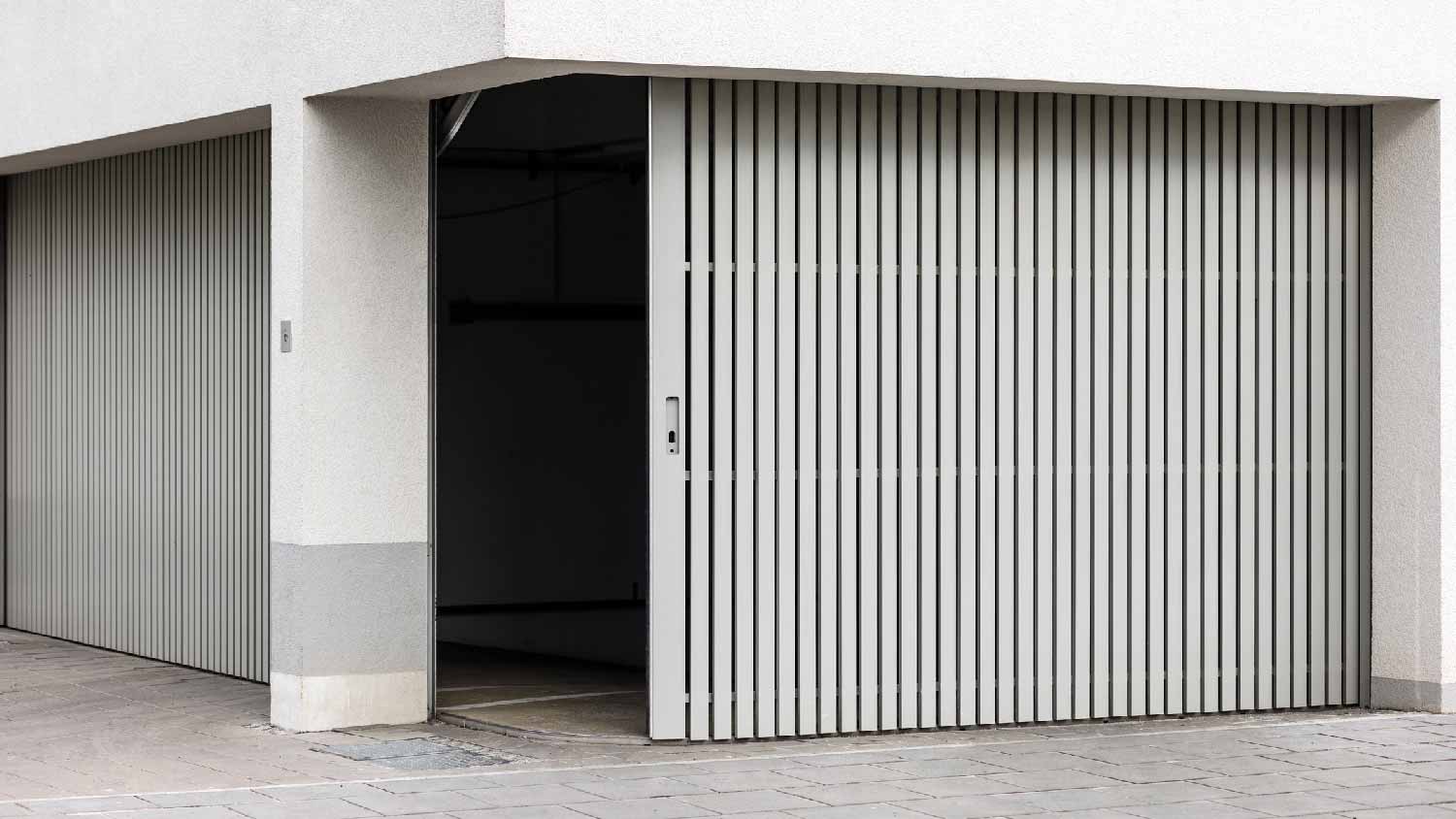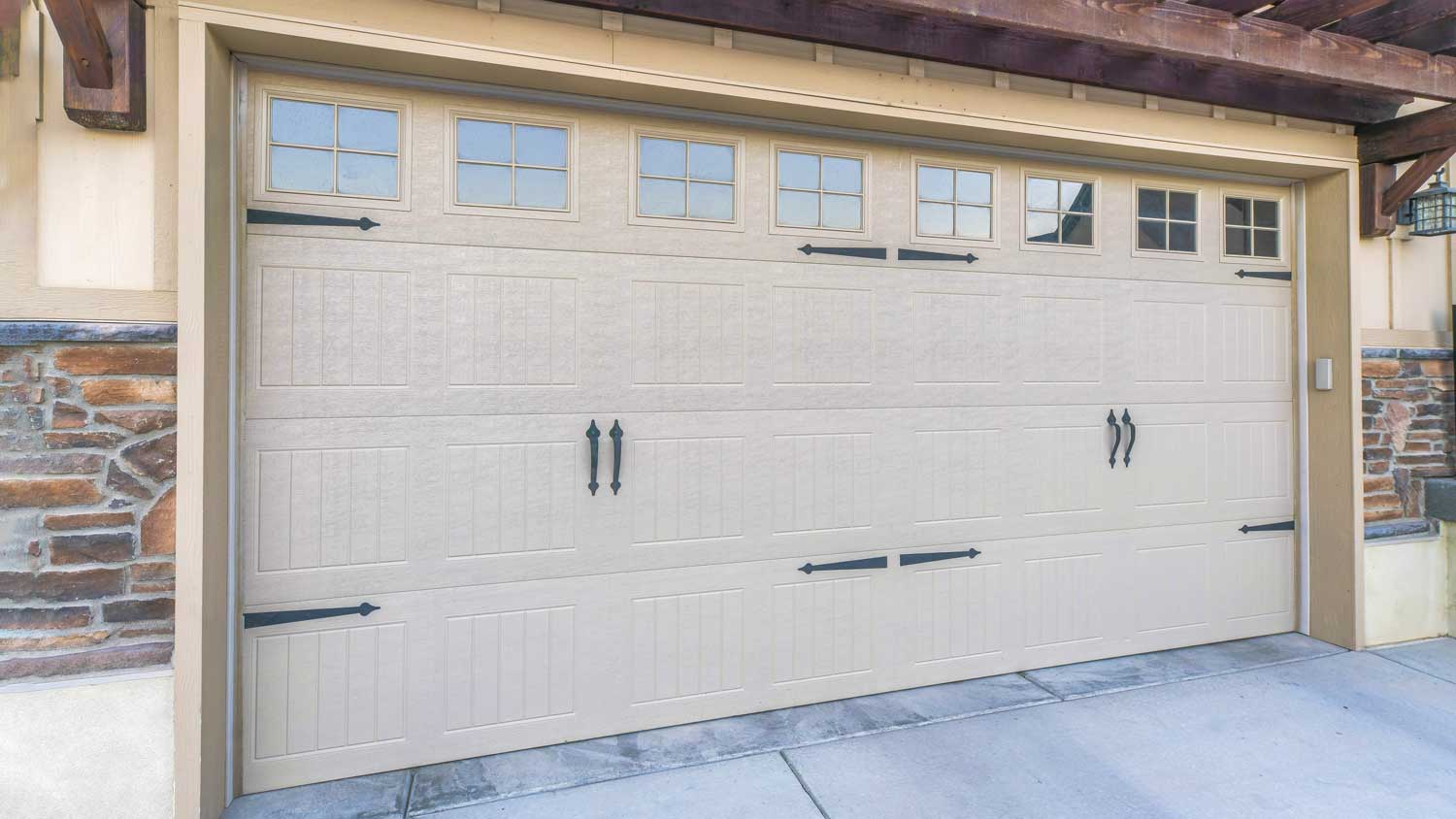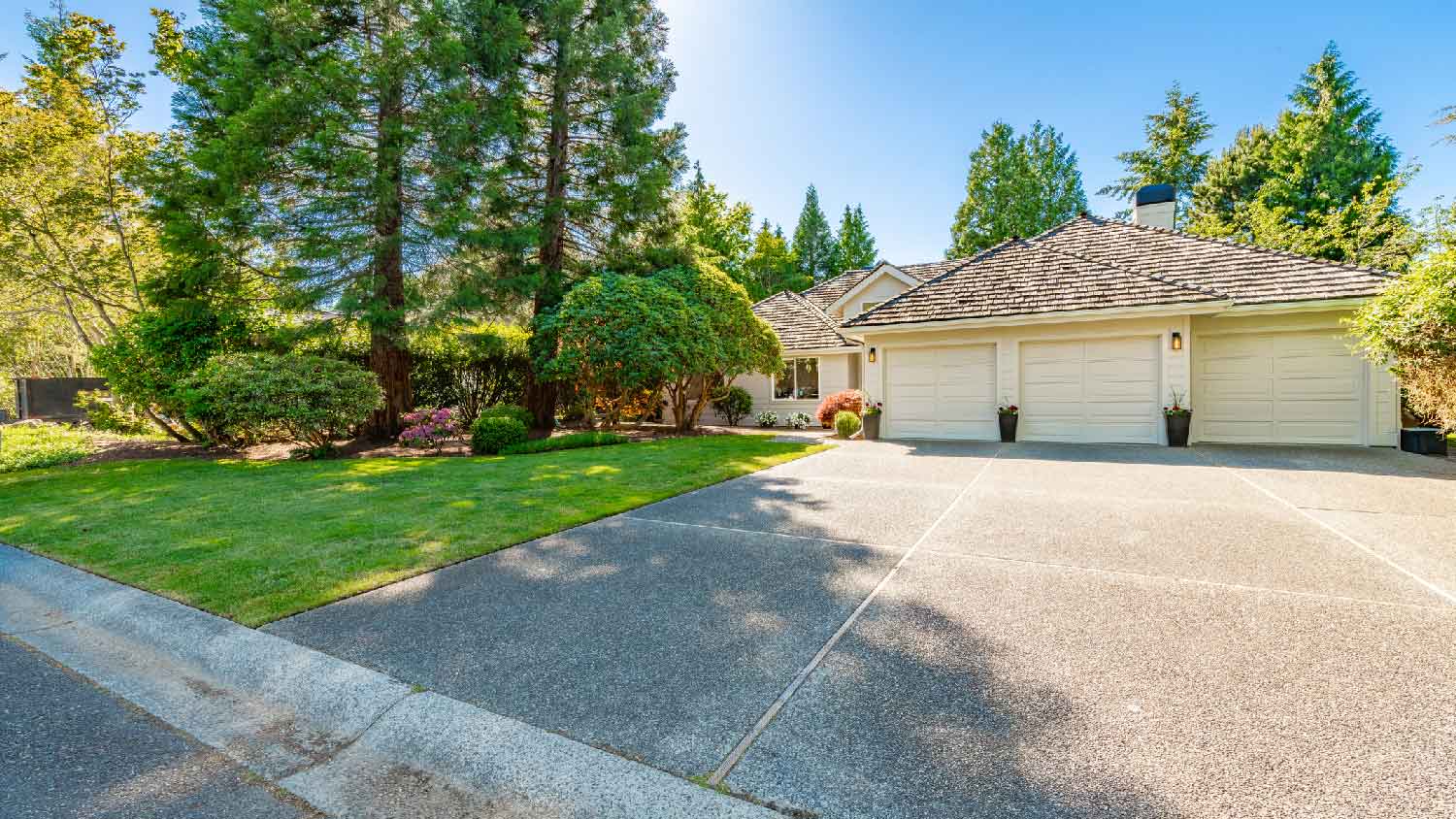How Much Does a Side Sliding Garage Door Cost? [2025 Data]
Installing a side sliding garage door costs $2,600 on average, but ranges between $1,000 and $9,000, depending on the door size and materials.


Installing a side sliding garage door costs $2,600 on average, but can range between $1,000 and $9,000 depending on whether it’s electronic or manual or a single or double piece. The door size and material it's made from are also important price factors. Garage doors that are side sliding are an excellent way to save a surprising amount of headroom in your garage. Whether you choose manual or electronic doors depends on whether you’re willing to pay for the increased convenience. Here’s a closer look at the factors that impact your side sliding garage door installation costs.
Side Sliding Garage Door Cost Factors
Types
| Types of Sliding Doors | Cost |
|---|---|
| Single-piece manual | $600 |
| Single-piece electronic | $1,800 |
| Two-piece manual | $800 |
| Two-piece electronic | $2,200 |
Side sliding garage doors all work the same way—sliding from the garage opening into the garage interior in an “L” shape. Two-piece doors don’t open like barn doors but slide inside the garage and rest against an interior wall.
Single-piece doors are more popular and only rest against a single wall inside the garage, which can simplify a garage layout, but they lack the sophistication of a two-piece setup that opens from the center of the garage. The type of garage door you choose has the largest impact on total cost.
Size
| Sliding Door Size (Single, Automatic) | Cost |
|---|---|
| 7-feet wide | $1,800 |
| 10-feet wide | $2,300 |
| 14-feet wide | $2,700 |
The larger the garage door size, the higher the cost. This is doubly true for automatic (often called electric) sliding doors because the motors needed to move a large and heavy door need to be much stronger than if the door was thin and not too wide. Most garage doors are the same height—8 to 9 feet—but the width can differ tremendously.
It’s worth noting that, at a certain point, you can’t install a wider door. This is due to building restrictions and safety codes, and eventually, a load-bearing beam or wall section would need to break the facade of a large single door, essentially splitting it in two.
Materials
The garage door material you select when installing a side sliding door will significantly impact its price. For instance, wood composite garage doors are more expensive than aluminum.
| Garage Door Material | Average Cost |
|---|---|
| Steel | $600–$2,000 |
| Aluminum | $700–$2,000 |
| Wood | $700–$1,800 |
| Wood composite | $950–$3,700 |
| Faux wood | $950–$4,100 |
| Fiberglass | $1,000–$2,100 |
| Vinyl | $1,000–$2,600 |
Labor

A local garage door professional will often charge hourly rates between $40 and $110 for side sliding door installation. If there isn’t any structural work, an installation often takes less than a day. This type of project is best left to a pro, and contractors can often find you better deals than the ones you’d get if you walked into a store yourself.
Prep
Besides removing the existing garage door (if there is one), the prep work when installing a sliding garage door isn’t too involved. Make sure the floor is clean and free of debris, brush any cobwebs from the ceiling, and make sure there’s nothing in the way.
Garage Door Removal
Because of the high tension in garage door springs, you need to hire a professional for removal. Manual sliding doors may not always have tension springs, which would removal much simpler. But garage door removal can still be risky, due to the weight of the doors, so you should always call a professional. Expect to pay between $250 and $1,200, depending on your type and size of sliding door.
Permits
Installing a sliding garage door requires a permit in almost every jurisdiction. A professional will help you file your permit—a step you want to do by the book, as there are steep penalties for building without a permit. Expect to pay between $100 and $200 for the permit.
Ongoing Expenses
Maintenance
All garage doors require maintenance, but sliding doors (especially manual ones) require much less involved maintenance. If your sliding door doesn’t involve any motors or electricity, all you have to do is check the tracks it runs on. Some other common maintenance requirements are:
Make sure there are no leaves, sticks, garbage, or other debris that prevents smooth operation.
Lubricate the tracks if necessary.
Spray the doors every few months to check for leaks.
Replace any worn weather strips.
Keep all bolts and screws tight.
If you have an automatic door, you’ll perform the same checks as above, but you’ll need to check the electronics at least once per year.
Repairs
The cost of replacing a garage door can be high, so it's wise to make repairs whenever possible. Because of the weight of the door and the complexities involved when replacing load-bearing parts, you should leave repairs to a professional. While the springs hold less tension than tilting door springs, you should avoid the possibility of injury whenever possible.
DIY Side Sliding Garage Door Install vs. Hiring a Pro
You can undertake many excellent DIY projects—this isn’t one of them. Garage doors require heavy lifting and a correct installation the first time. There isn’t much room for error, as any incorrect installation may result in serious structural damage to your home.
Automatic and spring-tensioned sliding doors should never be DIYed as there is serious pressure in the springs, and when they are not handled correctly, they can be extremely dangerous. The good news is that garage doors don’t take too much labor to install, so the savings you’d pocket DIYing the project aren’t that much to forfeit for peace of mind.
How to Save Money Installing a Side Sliding Garage Door
Saving money when installing a sliding garage door mainly comes down to materials. Labor is fairly standard across all projects except for the most custom, so paring down materials and mechanisms is where you can save the most money. Some good tips are:
Materials like vinyl or aluminum will be less expensive than wood or copper.
DIY any prep work that doesn’t require tensioned springs or extremely heavy lifting.
Choose a basic model of sliding door.
Prevent proper maintenance and upkeep to fend off damage.
How Angi Gets Its Cost Data
Home is the most important place on earth, which is why Angi has helped more than 150 million homeowners transform their houses into homes they adore. To help homeowners with their next project, Angi provides readers with the most accurate cost data and upholds strict editorial standards. We extensively research project costs to develop the pricing data you see, so you can make the best decisions for you and your home. We rely on reputable sources, including the U.S. Bureau of Labor Statistics, academic journals, market studies, and interviews with industry experts—all to ensure our prices reflect real-world projects.
Want to help us improve our cost data? Send us a recent project quote to costquotes@angi.com. Quotes and personal information will not be shared publicly.
Frequently Asked Questions
You can put sliding doors on your garage, but it’ll save you money if you install them when you’re building the garage, so you avoid removal costs for the old door. Garage doors are sectional, using vertical tracks and large springs to lift the door. These require professional removal, and the cost can quickly add up to thousands of dollars.
Sliding garage doors aren’t popular because when they can be inconvenient—they require you to leave your car—if they’re manual. But, if they’re automatic, they’re much more expensive than a conventional tilting door. Some find the sliding door less aesthetically pleasing than a tilting or barn door.
Building a garage costs between $16,500 and $41,000, but most homeowners pay between $5,000 and $70,000. The enormous range in costs is due to a wide variety of sizes and materials, as well as certain projects requiring specialized labor. Some good news is that if you ever sell or refinance your home, you can often recoup the cost of a garage install.
Having a garage installed certainly adds to the value of your home. The consideration is not whether it adds value, but for many, they want to know if adding a garage yields a return on their investment or ROI. While garages can add anywhere from 5% to 20% of the total value of your property, that doesn’t mean that they return 5% to 20% of the money invested in building them. Most homeowners build garages for a purpose but know that you can recover your investment when you sell or refinance.














